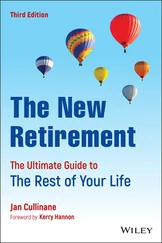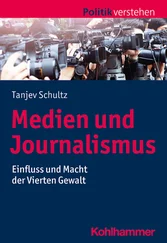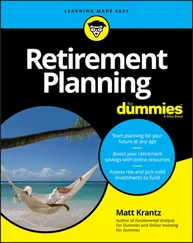Companies should have learned their lesson when the tech bubble burst in 2000, ushering in a grinding three-year bear market. Pension plans lost billions, but many companies could draw on their stockpiled credits to delay the impact on earnings. These stockpiles were quickly depleted, which led to a frenzy of pension freezes.
Thanks to double-digit returns during the ensuing mortgage bubble, combined with gains from pension cuts, the plans were collectively fully funded by 2007. But pension managers had no margin for error. The percentage of plan assets in stock still exceeded 60 percent, and when the subprime crisis arrived in late 2008 and 2009, it erased as much as one-third of the assets in pension plans.
By then, employers had already consumed the huge cushions of surplus and had used up the stockpile of credits. Their solution: Many that hadn’t already done so froze their plans.
This ability to cut pensions when the plans had investment losses effectively shifted the investment risk to employees and retirees. It’s a trend that has upended the risk-reward trade-off in retirement plans: In 401(k)s, employees bear the investment risk but also keep all the upside. In pensions, employers are supposed to bear the investment risk and keep the upside. Not anymore.
The real problem with pensions isn’t “volatility.” It’s that the accounting rules enable employers to gamble with retirees’ money and then shift the risk to them. And if the plans collapse altogether, companies can shift the risk to the PBGC.
Having shot off their own toes, employers are now seeking “funding relief,” which would enable companies with weak pension plans to delay putting money into them: Forcing them to contribute to their pensions, they say, will divert precious cash they need to avoid layoffs, hire new workers, and create more jobs.
Their argument, some version of which has been around since the dawn of ERISA funding rules sounds plausible to many lawmakers on both sides of the aisle. But companies seeking funding relief fail to acknowledge that most of their current woes are self-inflicted. They took on too much risk but failed to fund when the party inevitably wound down. They withdrew too much money—and in many cases paid their executives too much compensation—instead of contributing to the pension plans for retirees. Their pleas for funding relief are little different from the banks asking for bailouts after their own risky lending practices and financial shenanigans brought the economy to its knees.
Companies in financial trouble, and with chronically deficit-riddled pensions—notably automakers and steelmakers—are the ones pushing most aggressively for funding relief, though they’re the very companies that shouldn’t get it. Likewise, financially troubled companies with well-funded plans don’t need relief, either: What’s really needed is laws that make it tougher for companies to terminate their pensions to capture the surplus money.
Healthy companies with well-funded pensions certainly don’t need “relief.” Many are sitting on record amounts of cash and are happy to contribute billions to their plans. The contributions are deductible and grow tax-free, while the expected investment returns provide a guaranteed lift to profits. Because remember: If the investments were outside the pension plan, the only way to get income from them would be to sell them, pay taxes on the gains, and report what’s left as income. Add to these tax benefits the variety of ways employers can tap the assets and the pension plan looks like a pretty nice place to park money. And, as the ERISA Advisory Council demonstrated in their meeting in 1999, the surplus is never really locked up.
What these healthy companies with healthy pensions really want is the ability to stuff even more money into their pension plans, which they’re prevented from doing. Congress enacted the full funding limit in 1987 to prevent employers from using their pension plans as tax shelters. It prohibits employer contributions if assets exceed 150 percent of the current liability. Employers have lobbied to undo this regulation ever since.
Bottom line: When it comes to funding rules, employers don’t want to be forced to contribute, yet they also want to be able to contribute as much asas they’d like. They argue that these freedoms would enhance retirement security. We’ve seen how well the current laws work. These “solutions” would only lead to more of the same.
Another reality check: Analysts’ reports on the state of pension funding, which employers, lawmakers, and the media routinely cite, overstate the amount of underfunding. The funding figures come from SEC filings, which include the value of executive pensions and foreign pensions. These are typically unfunded, which brings down the funding percentages, thus making the supposed “underfunding” of employee pension plans in the United States appear worse than it is.
As employers phase out pensions, 401(k)s are becoming the dominant way to save. But 401(k)s won’t save the day. Many excellent books have been written about the inadequacies of these plans. They’ve already proven to be failures for young and lower-paid workers, who don’t participate, contribute too little, and then spend whatever they have saved when they change jobs.
Even middle-class workers who diligently save are unlikely to accumulate enough to support them in retirement. The plans may be loaded with employer stock that employees are locked into, and the accounts are collections of investing accidents that are even less likely to survive the inevitable market meltdowns. At the end of the day, 401(k)s have been a boon primarily for high-income employees, who can afford to save, and who simply move existing assets into tax-sheltered retirement plans.
These deficits have been well documented. They aren’t the only ones. Like pensions, 401(k)s have a hidden history, and a darker side. That’s why the “solutions” to improve 401(k)s won’t work.
For one thing, despite the 401(k) plan’s image as a democratic savings plan for the masses, it was never intended to be a savings vehicle for the rank-and-file. Employers first set up 401(k)s in the early 1980s so managers could defer their bonuses. The IRS stepped in, saying that taxpayers shouldn’t be subsidizing a discriminatory system. To keep the tax breaks, the plans had to cover a broad group of the rank-and-file.
If the IRS had said “all employees,” or “all employees whose last names begin with the letters P through Z,” there would be no question about who could or could not participate in the 401(k). But, as we’ve seen, employers took advantage of loopholes in the discrimination rules to exclude millions of low-paid workers, provide them with less generous contributions, and make it hard to join the plan and build benefits. In short, many companies have continued to manage 401(k)s for the benefit of the highly paid.
With this in mind, consider the employers’ proposals to increase participation among the lower-paid. One is “automatic enrollment,” enacted in the 2006 Pension Protection Act, which was sold as a way to include participation among the low-paid, because employees are automatically signed up unless they opt out. As long as employers merely offer automatic enrollment (even if low-paid employees opt out) and contribute 3 percent to their accounts, the plans don’t have to pass discrimination tests.
In the abstract, automatic enrollment sounds great. But plug in some real numbers and the picture isn’t so rosy. For a nurse’s aide making $20,000 a year, the 3 percent contribution will cost the employer just $600. That won’t exactly break the bank. But employers are now lobbying for “relief” from the mandated 3 percent contribution, citing hard times. They still want to have the safe harbor from the discrimination rules, though.
Читать дальше












